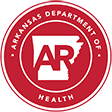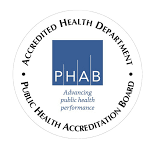Cancer Registry On-Boarding Process
Click the steps below for more information.
- Stage 2: Complete Steps 1-6
- Step 1: Registration
Eligible Provider or Eligible Hospital notifies ADH of interest in submitting cancer data for Meaningful Use.
-
Complete the Cancer Registry registration process through the Meaningful Use Registration and Communications System (MURCS).
Note: Completion of this step assumes the data submitter has acquired and implemented a certified health IT product capable of producing an HL7 Clinical Document Architecture (CDA) cancer data message.
Proceed to Step 2: Pre-Testing.
-
- Step 2: Pre-Testing
Validate test messages using the CDC’s CDA Validation Plus tool.
Request a copy of the CDA Validation Plus tool by sending an email to viu3@cdc.gov.
Follow these steps to process a XML test message:
- Create a XML test message from your certified EHR. Name the file NPI_Validation.xml (NPI being the NPI of the testing facility/provider).
- Validate the test message using the Validation Plus tool. (A training manual is provided with the Validation Plus download.)
- Save the validation results to a PDF. Name the file NPI_Validation.pdf (NPI being the NPI of the testing facility/provider).
Note: The CDA Validation Plus tool validates XML documents created by EHR technology against the structure defined by the Implementation Guide for Ambulatory Healthcare Provider Reporting to Central Cancer Registries, and all included and referenced standards, specifications, and guidelines. The tool is intended for certifying 2014 Edition Meaningful Use EHR technology.
Proceed to Step 3: Testing.
- Step 3: Testing
Eligible Provider or Eligible Hospital submits Cancer Registry test message to ADH.
- Upload a test message into MURCS, and include Cancer Registry validation reports that indicate the test message is error-free.
- Uploading an HL7 2.5.1 Validation Report into MURCS.
Questions: Please contact Cancer Registry.
Email is not a secure mechanism of data transfer. Do not submit test messages containing personally identifiable health information through email. ADH reviews the messages, and ensures that they meet standards specified for Meaningful Use. Once the review is complete, ADH provides communication about the outcome of testing that can be used for attestation purposes.
Proceed to Step 4: In Queue.
- Step 4: In Queue
Eligible Provider placed on a waiting list for ongoing submission and additional validation.
Eligible hospitals or professionals who have successfully submitted qualifying test messages are placed into the queue. ADH Program Coordinators will notify eligible providers in order of registration. We anticipate that the queue will grow as Meaningful Use progresses. To improve timeliness, provide ADH with Cancer Registry validation reports and test messages as early as possible in the attestation process.
Once an eligible hospital or professional reaches the front of the queue, the provider is notified by an ADH Program Coordinator when it is time to proceed to Step 5: Validation.
- Step 5: Validation
Eligible Provider establishes an ongoing electronic cancer data feed to ADH, and works with a Cancer Registry Coordinator for data validation.
- Select a data transport mechanism for ongoing submission of Cancer Registry data.
ADH supports the following transport options:
- HTTPS Web Service (preferred).
- Virtual Private Network (VPN).
- Secure File Transport Protocol (SFTP).
- Public Health Information Network Messaging System (PHINMS),
- Health Information Exchange and Arkansas State
- Health Alliance for Records Exchange (SHARE).
HTTPS Web Service
Web Services include all other public health objectives within ADH. This point of access is now available for the Cancer Registry.
VPN
A VPN creates a secure channel of communication (i.e. a "tunnel") over a public network, such as the Internet. Security is provided through authentication, which ensures that the connecting entity is authorized. Encryption is used to protect the data during transit.
SFTP
SFTP is a network protocol designed to offer encrypted file management, encrypted file transfer, and encrypted file access functionality over a secure channel.
PHIN MS
PHIN MS is the public health standard for reporting to the Centers for Disease Control and Prevention (CDC) and is a standard for national laboratories reporting to states. The software is freely available from the CDC.HIE/SHARE
The Arkansas HIE is implemented, which allows health care professionals to appropriately access and securely share a patient’s medical information electronically.
-
Set up a transport mechanism. Request WSDL and a client certificate from your interface coordinator or send an email to ADH.CANCER.MU@arkansas.gov.
-
Transmit a test message via the web service.
-
Begin ongoing submission and participate in validation activities.
-
Proceed to Step 6: Production.
- Step 6: Production
Eligible Provider reports via cancer data electronic feed, and participates in periodic quality assurance activities.
-
Continue ongoing submission of cancer data to public health.
If the community identifies a need to follow up on data that indicates an event of potential public health concern, it will contact data providers.
or
If ADH identifies a need to follow up on data that indicates an event of potential public health concern, it will contact data providers.
Eligible hospitals and professionals are required to participate in periodic quality assurance checks to ensure reporting accuracy. The Arkansas Department of Health Program Coordinators will contact data providers to schedule these activities.
Learn more about Meaningful Use activities at the Arkansas Department of Health by visiting the Meaningful Use page.
Downloads
- Meaningful Use Cancer Registry On-Boarding Instructions
- Arkansas Department of Health Meaningful Use Cancer Registry On-Boarding Checklist
Questions? Contact the Cancer Registry.
-


